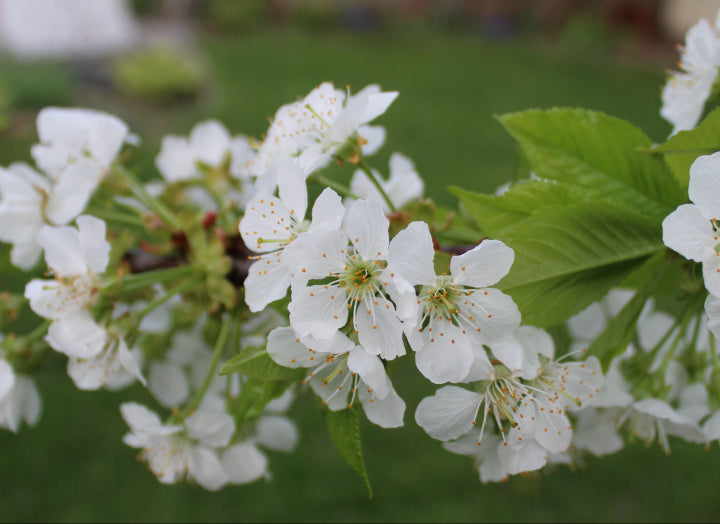
August: Japan's National Flower the Cherry Blossom
This month we’re exploring Japan’s national flower, the cherry blossom, or Sakura. This beautiful tree symbolizes fleeting beauty and urges its beholder to cherish the small moments in life.
Ancient Stories of Cherry Blossom Trees
Ubazakura
 400 years ago in a village called Asamimura, a man named Tokubei resided. He was head of the village, and despite various attempts, he was not able to have children. After years of praying, his family finally had a daughter. As the daughter grew up, she had a wet nurse named O-Sode. Unfortunately, when she was 15 she fell ill, and O-Sode prayed to the cherry blossom tree to save the young girl in exchange for her own life. O-Sode prayed every day for 21 days until the young girl recovered.
400 years ago in a village called Asamimura, a man named Tokubei resided. He was head of the village, and despite various attempts, he was not able to have children. After years of praying, his family finally had a daughter. As the daughter grew up, she had a wet nurse named O-Sode. Unfortunately, when she was 15 she fell ill, and O-Sode prayed to the cherry blossom tree to save the young girl in exchange for her own life. O-Sode prayed every day for 21 days until the young girl recovered.
Everyone rejoiced, but soon O-Sode fell ill and passed away. She confessed the true nature of her prayers on her death bed, and thus the village planted a cherry blossom in her honor. It grew strong and healthy and would bloom on the anniversary of O-Sode’s passing every year. The people called the tree Ubazakura, the Cherry-tree of the Milk-Nurse.
Ishiwarizakura
In Morioka Japan, there is a tree called Ishiwarizakura, or the Stone-Splitting-Cherry. It isn’t as much a piece of folklore as it is a natural phenomenon. The tree took root in a small crack in a boulder. It eventually grew so large that it split the boulder in half. It’s believed the that beauty and power of the cherry tree were enough to split stone, symbolizing the tenacity and beauty of the national symbol.
Yamataka Jindai Zakura
 About 10.3 meters tall, 11.8 meters wide, and estimated 2,000 years old, this tree is thought to be one of the oldest trees in Japan. Because of this, it was designated the country’s first-ever Natural Monument. The tree was said to have been planted by the warrior prince Yamato Takeru, a famous hero in Japanese folklore, and has stood strong because of his fortitude.
About 10.3 meters tall, 11.8 meters wide, and estimated 2,000 years old, this tree is thought to be one of the oldest trees in Japan. Because of this, it was designated the country’s first-ever Natural Monument. The tree was said to have been planted by the warrior prince Yamato Takeru, a famous hero in Japanese folklore, and has stood strong because of his fortitude.
DC’s Cherry Blossoms
Washington DC houses a famous collection of cherry blossoms that were gifted from Japan in 1912. It took nearly 30 years for them to finally make their way into the ground all thanks to Eliza Scidmore who was an early newspaper correspondent in the 1870s. She was struck by the cherry blossoms in Japan.Specifically by the japanese Hanami, an annual festival in which citizens stroll beneath the blooming trees in the spirit of humanity, fellowship, and shared joy. Scidmore wanted to bring such wonder back to the United States, so after 24 years of asking, she finally was able to convince the government to bring in 3,000 cherry trees which are still an annual beauty during the National Cherry Blossom Festival!
|
|
|
|
|
|||||||||||||||

